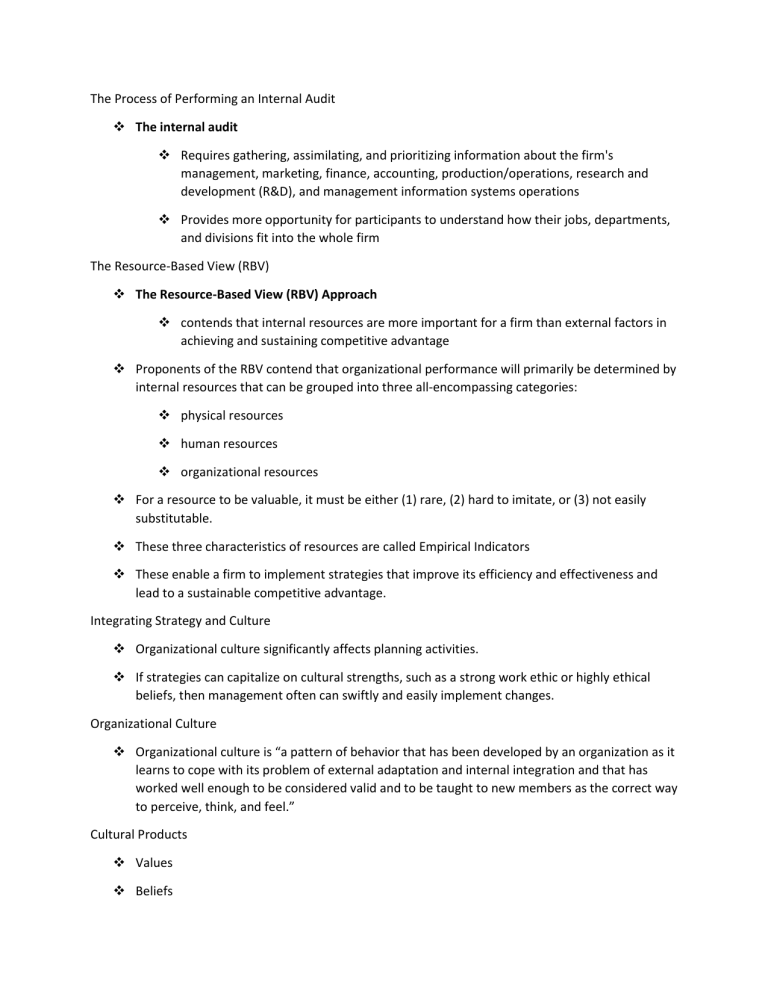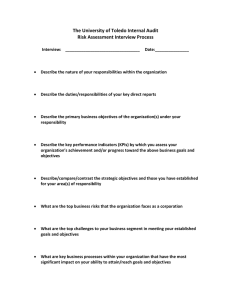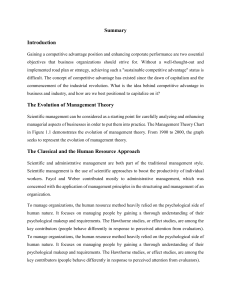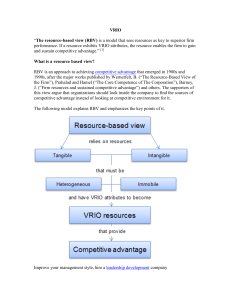
The Process of Performing an Internal Audit
The internal audit
Requires gathering, assimilating, and prioritizing information about the firm's management, marketing, finance, accounting, production/operations, research and development (R&D), and management information systems operations
Provides more opportunity for participants to understand how their jobs, departments, and divisions fit into the whole firm
The Resource-Based View (RBV)
The Resource-Based View (RBV) Approach
contends that internal resources are more important for a firm than external factors in achieving and sustaining competitive advantage
Proponents of the RBV contend that organizational performance will primarily be determined by internal resources that can be grouped into three all-encompassing categories:
physical resources
human resources
organizational resources
For a resource to be valuable, it must be either (1) rare, (2) hard to imitate, or (3) not easily substitutable.
These three characteristics of resources are called Empirical Indicators
These enable a firm to implement strategies that improve its efficiency and effectiveness and lead to a sustainable competitive advantage.
Integrating Strategy and Culture
Organizational culture significantly affects planning activities.
If strategies can capitalize on cultural strengths, such as a strong work ethic or highly ethical beliefs, then management often can swiftly and easily implement changes.
Organizational Culture
Organizational culture is “a pattern of behavior that has been developed by an organization as it learns to cope with its problem of external adaptation and internal integration and that has worked well enough to be considered valid and to be taught to new members as the correct way to perceive, think, and feel.”
Cultural Products
Values
Beliefs
Rites
Rituals
Ceremonies
Myths
Stories
Legends
Sagas
Language
Metaphors
Symbols
Folktales
Heroes and heroines
Management
The functions of management consist of five basic activities:
Planning: forecasting, establishing objectives, devising strategies, and developing policies
Organizing: organizational design, job specialization, job descriptions, span of control, coordination, job design, and job analysis
Motivating: leadership, communication, work groups, behavior modification, delegation of authority, job enrichment, job satisfaction, needs fulfillment, organizational change, employee morale, and managerial morale
Staffing: wage and salary administration, employee benefits, interviewing, hiring, firing, training, management development, employee safety, equal employment opportunity, and union relations
Controlling: quality control, financial control, sales control, inventory control, expense control, analysis of variances, rewards, and sanctions
Does the firm use strategic-management concepts?
Are company objectives and goals measurable and well communicated?
Do managers at all hierarchical levels plan effectively?
Do managers delegate authority well?
Is the organization's structure appropriate?
Finance/Accounting Audit Checklist
1.
Where is the firm financially strong and weak as indicated by financial ratio analyses?
2.
Can the firm raise needed short-term capital?
3.
Can the firm raise needed long-term capital through debt and/or equity?
4.
Does the firm have sufficient working capital?
5.
Are capital budgeting procedures effective?
6.
Are dividend payout policies reasonable?
7.
Does the firm have good relations with its investors and stockholders?
8.
Are the firm's financial managers experienced and well trained?
9.
Is the firm's debt situation excellent?
Management Information Systems
Management Information System
Receives raw material from both external and internal evaluation of an organization
Improves the performance of an enterprise by improving the quality of managerial decisions
Collects, codes, stores, synthesizes, and presents information in such a manner that it answers important operating and strategic questions
Management Information Systems Audit
1.
Do all managers in the firm use the information system to make decisions?
2.
Is there a chief information officer or director of information systems position in the firm?
3.
Are data in the information system updated regularly?
4.
Do managers from all functional areas of the firm contribute input to the information system?
5.
Are there effective passwords for entry into the firm's information system?
6.
Are strategists of the firm familiar with the information systems of rival firms?
7.
Is the information system user-friendly?
8.
Do all users of the information system understand the competitive advantages that information can provide firms?
9.
Are computer training workshops provided for users of the information system?
10.
Is the firm’s information system continually being improved in content- and user-friendliness?
Value Chain Analysis (VCA)
Value Chain Analysis (VCA)
refers to the process whereby a firm determines the costs associated with organizational activities from purchasing raw materials to manufacturing product(s) to marketing those products
aims to identify where low-cost advantages or disadvantages exist anywhere along the value chain from raw material to customer service activities
Benchmarking
Benchmarking
an analytical tool used to determine whether a firm's value chain activities are competitive compared to rivals and thus conducive to winning in the marketplace
entails measuring costs of value chain activities across an industry to determine “best practices”





